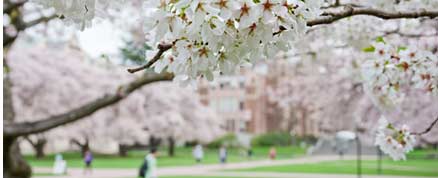Getting Accepted to Your Top Choice College or University
The Truth About College Acceptances
Most of the best-known and most widely-read newspapers, magazines and wire services speak of “gloom and doom” every spring as college decisions arrive on-line and in the mailbox. Unfortunately, what most people don’t realize is that a handful of schools are causing the frenzy, making students feel as if they will never be accepted into a good school. The truth couldn’t be farther away. Many surveys conducted by both NACAC (National Association of College Admissions Counselors), the Chronicle of Higher Education, and the National Survey of Student Engagement (NSSE) tell a much different story, one the media doesn’t choose to cover, because the stories of “gloom and doom” sell more newspapers and magazines.
True, the class of 2009 is graduating a record 3.33 million high school students, up from 3.30 million in the class of 2008. This is the highest since the early 1970’s. 63% of high school students go on to college. And even though “colleges have expanded capacity at a rate of about 5% each year, the increase in applications has been outstripping capacity growth by an average of 11 percentage points per year,” says David Hawkins, public policy director for NACAC, “in part because of the ease of applying on-line.”
One must remember that the landscape of college admissions has changed. Columbia University received 8,713 applications in 1995 (24%were accepted) and in 2006, they had 17,152 applications, an increase of 97% in 11 years (10% were accepted). Stanford admitted just 9.5% of applicants to this year’s freshman class, down from 10.3% last year, while Harvard admitted 7.1% of the 27,462 for this year, down from 9% of the 22,955 applicants the year before. Applicants must recognize that these colleges represent a handful of the most elite schools and one does not have to attend them to be successful in life
You may be surprised at findings from some of the research institutes about college admissions. For instance, the UCLA Higher Education Research Institute (HERI) conducted its Freshman Survey between March – October 2007 with 700 two-and-four colleges and universities administering the survey to 400,000 students. The most interesting data says that 81% of students were accepted by their first choice school and 67.3% were actually attending their first choice school with 22% getting into their second choice college. According to the State of College Admissions report in 2006 by the National Association for College Admissions Counseling (NACAC), “The average admit rate for 4-year colleges is 70%, and that number has not changed much in 20 years.”
“Second choice does not always mean second best,” according to Ed Sevilla, Vice President for Enrollment Management at Stonehill College in Easton, Massachusetts. A graduate of Yale and a Wharton M.B.A., Sevilla maintains that the number of available seats in top-tiered colleges is relatively fixed. “The size of the incoming Yale freshman class is virtually the same as it was when I graduated 25 years ago.” But today’s students have so many good colleges to choose from, 2,629 to be exact. It is quite likely that students at a great number of these schools will be taught by a professor who holds a Ph.D. from an Ivy League or similar top research institution.
Instead of just considering the popular rear-windshield decal, look closely at the mission of the school and whether they are “preparing critical thinkers to engage productively with the wider world.” This can be accomplished at a number of schools, as long as the school is a good “fit” for the student.



